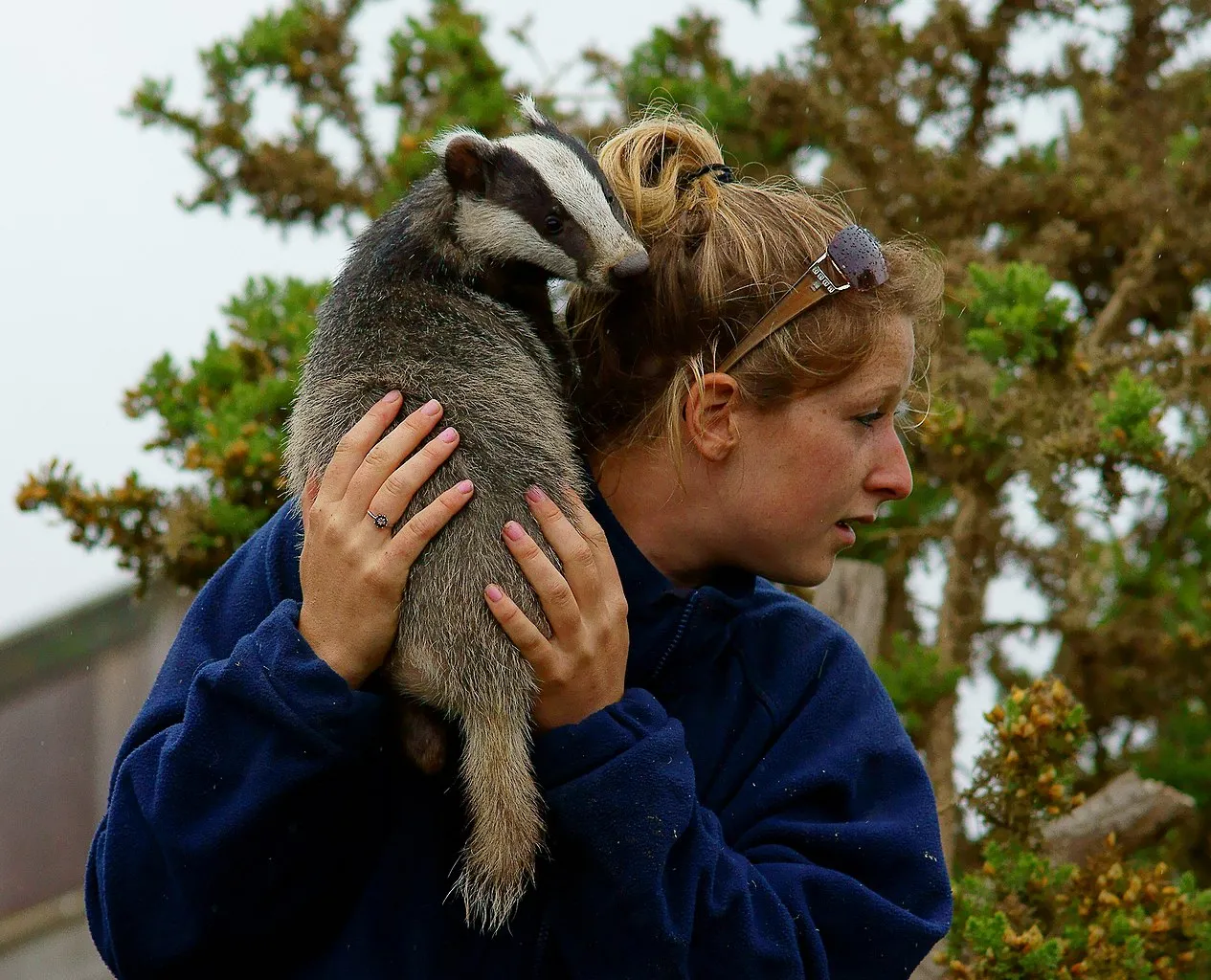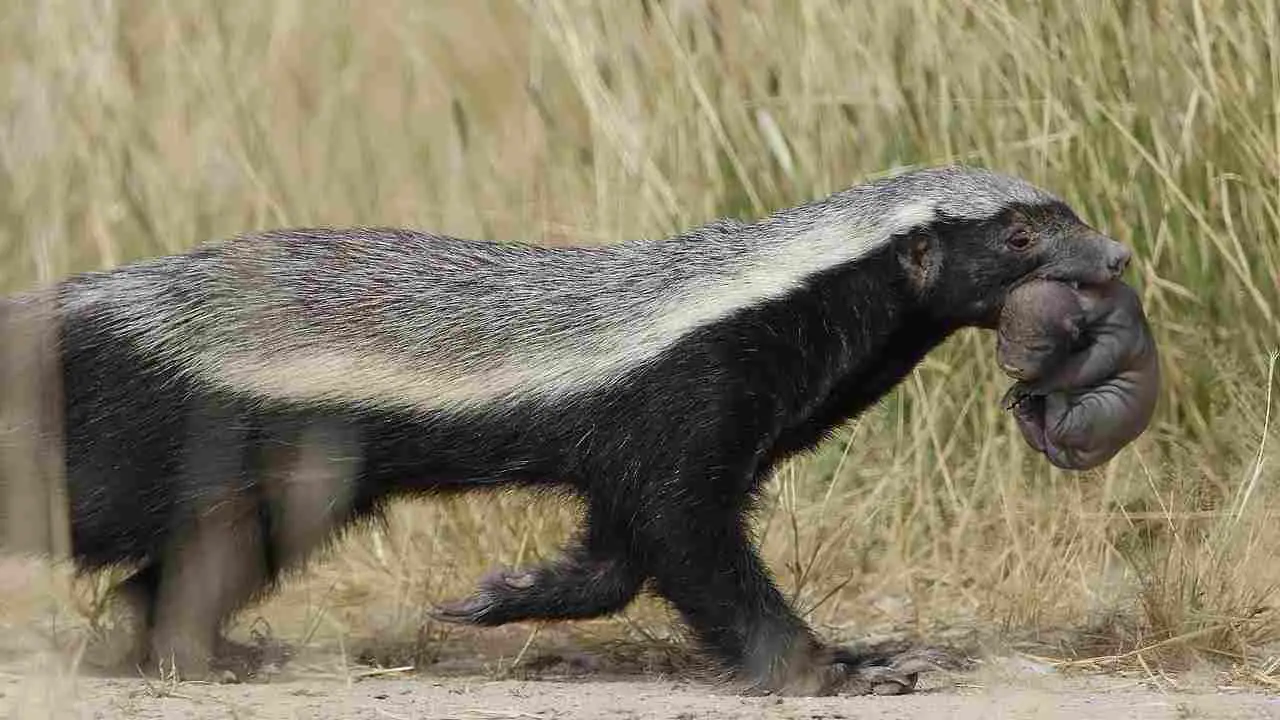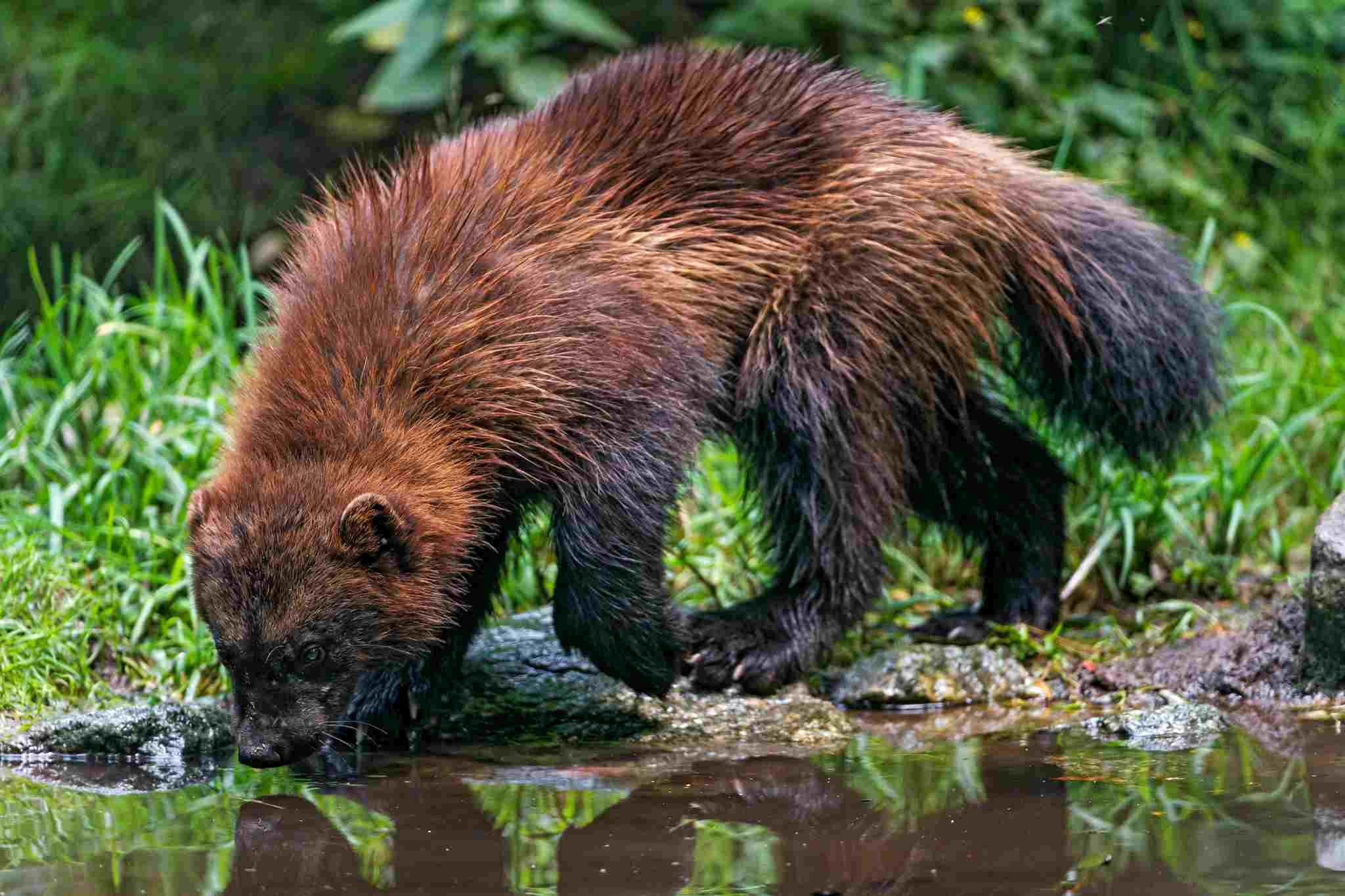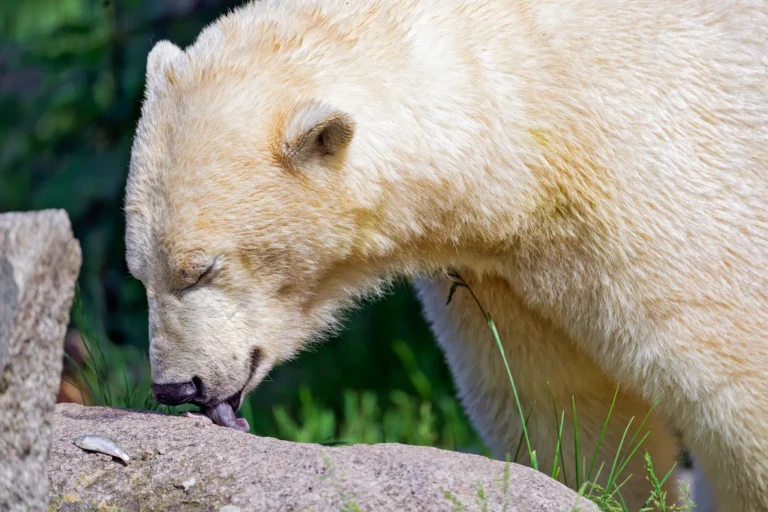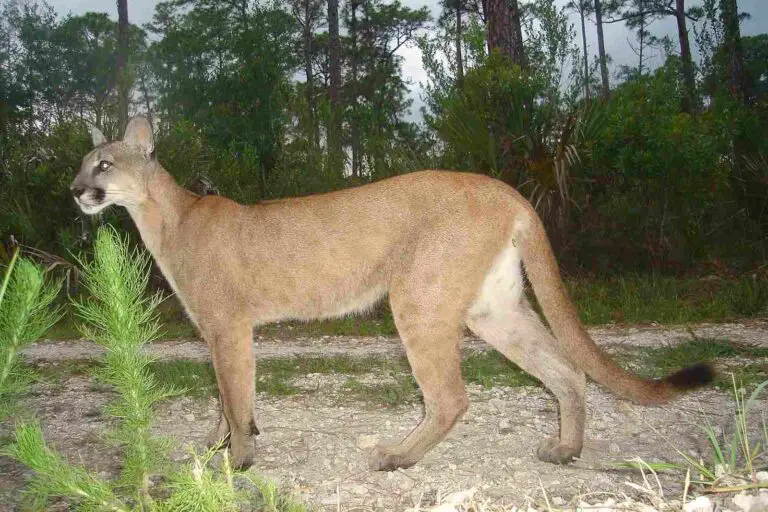English Badger Vs American Badger Size, Weight, Overall Comparison
English badgers and American badgers, distinct members of the Mustelidae family, present an intriguing scenario for a hypothetical confrontation. The English badger, renowned for its size and weight, faces off against the American badger, known for its predatory prowess. This analysis explores their taxonomy, appearance, size, weight, agility, aggressiveness, and predatory features to speculate on the potential outcome of a one-on-one clash between these two mustelids.
English Badger vs American Badger: Assessing the Likely Victor in a Confrontation
An English badger is likely to win against an American badge in a physical confrontation due to its supeir size and weight, although the latter is more predatory and agile.
I). Size and Weight Advantage:
– The English badger boasts superior size and weight compared to the American badger. This advantage gives the English badger greater physical strength and the ability to potentially dominate in a one-on-one fight.

II). Predatory Capabilities of the American Badger:
– American badgers are known for their efficient hunting skills and predatory capabilities. While they may be smaller in size, their agility and predatory instincts could play a crucial role in turning the tide of the confrontation.
III). Agility and Adaptability:
– Both English and American badgers possess agility and adaptability, but the English badger’s size advantage could influence the dynamics of the encounter. The American badger’s agility, however, may offer it opportunities to evade and counteract the larger opponent.
IV). Aggressiveness:
– Badgers, in general, are characterized by their aggressiveness, and this trait is shared by both the English and American badgers. The intensity of their aggression could shape the outcome of the confrontation.
V). Overall Verdict:
– While the English badger holds a notable advantage in size and weight, the American badger’s predatory capabilities and agility provide a formidable counterbalance. The outcome of a one-on-one fight between these badgers would depend on a complex interplay of factors, with the English badger’s size potentially tipping the scales in its favor. However, the American badger’s hunting skills and adaptability could make this a closely contested encounter, highlighting the intricacies of nature’s diverse adaptations within the Mustelidae family.
*Details of Comparison
| Criteria | English Badger |
American Badger
|
| Taxonomy | Mustelidae family, Carnivora order |
Mustelidae family, Carnivora order
|
| Appearance | Compact build, black and white markings |
Flatter body, grizzled appearance
|
| Size | Similar | Similar |
| Weight | Generally heavier | Generally lighter |
| Bite Force | Limited data, powerful bites in American badgers |
Powerful bites adapted for digging
|
| Physical Offensive Advantages | Sharp claws, powerful jaws for digging |
Sharp claws, robust jaws for digging
|
| Physical Defensive Advantages | Tough skin, fur, retreat into burrows |
Thick, loose skin, aggressive defense
|
| Speed | Moderate | Moderate |
| Agility | Agile in navigation |
Highly agile, effective movement
|
| Overall Physical Capacity | Robust build, adapted for digging |
Flatter body, enhanced burrowing
|
| Habitat Preference(s) | Woodlands, grasslands, meadows |
Open grasslands, prairies
|
| Tracks | Claw marks, spaced out due to moderate speed |
Claw marks, spaced out due to faster speed
|
| Lifespan | 4-5 years | 4-10 years |
| Mode of Feeding | Omnivorous |
Primarily carnivorous
|
| Social Behavior | Generally solitary, some social interactions |
Generally solitary, aggressive territorial behavior
|
| Mode of Reproduction | Late winter or early spring breeding, 7 weeks gestation |
Summer breeding, 6 weeks gestation, cubs born in spring
|
| Parental Behavior | Sows play a primary role in raising cubs, communal behavior |
Female raises cubs independently, cubs start exploring early
|
| Proximity to Human-Inhabited Areas | Rural and suburban areas |
Various habitats, including farmlands
|
| Behavior Toward Humans | Shy, defensive if threatened |
Generally avoids, aggressive if provoked
|
| Danger Posed to Humans | Generally not considered dangerous, rare defensive aggression |
Can be aggressive, poses a threat if provoked
|
| Associated Precautions | Respectful observation, avoid sett disturbance |
Caution recommended, maintain safe distance
|
| Conservation Status | Generally Least Concern |
Varies by region, localized threats
|
Key Points:
- English badgers are generally heavier than American badgers.
- American badgers are known for powerful bites adapted for digging.
- English badgers have a broader omnivorous diet, while American badgers are primarily carnivorous.
- English badgers may exhibit more social interactions within family groups.
- Differences in breeding seasons and maternal behaviors.
- American badgers are more likely to display aggression if provoked.
- Both species face localized threats and have varying conservation statuses.
- Precautions for minimizing disturbance are similar for both.
1. Taxonomy:
English Badger:
Scientific Name: Meles meles
Family: Mustelidae
Order: Carnivora
American Badger:
Scientific Name: Taxidea taxus
Family: Mustelidae
Order: Carnivora
2. Appearance:
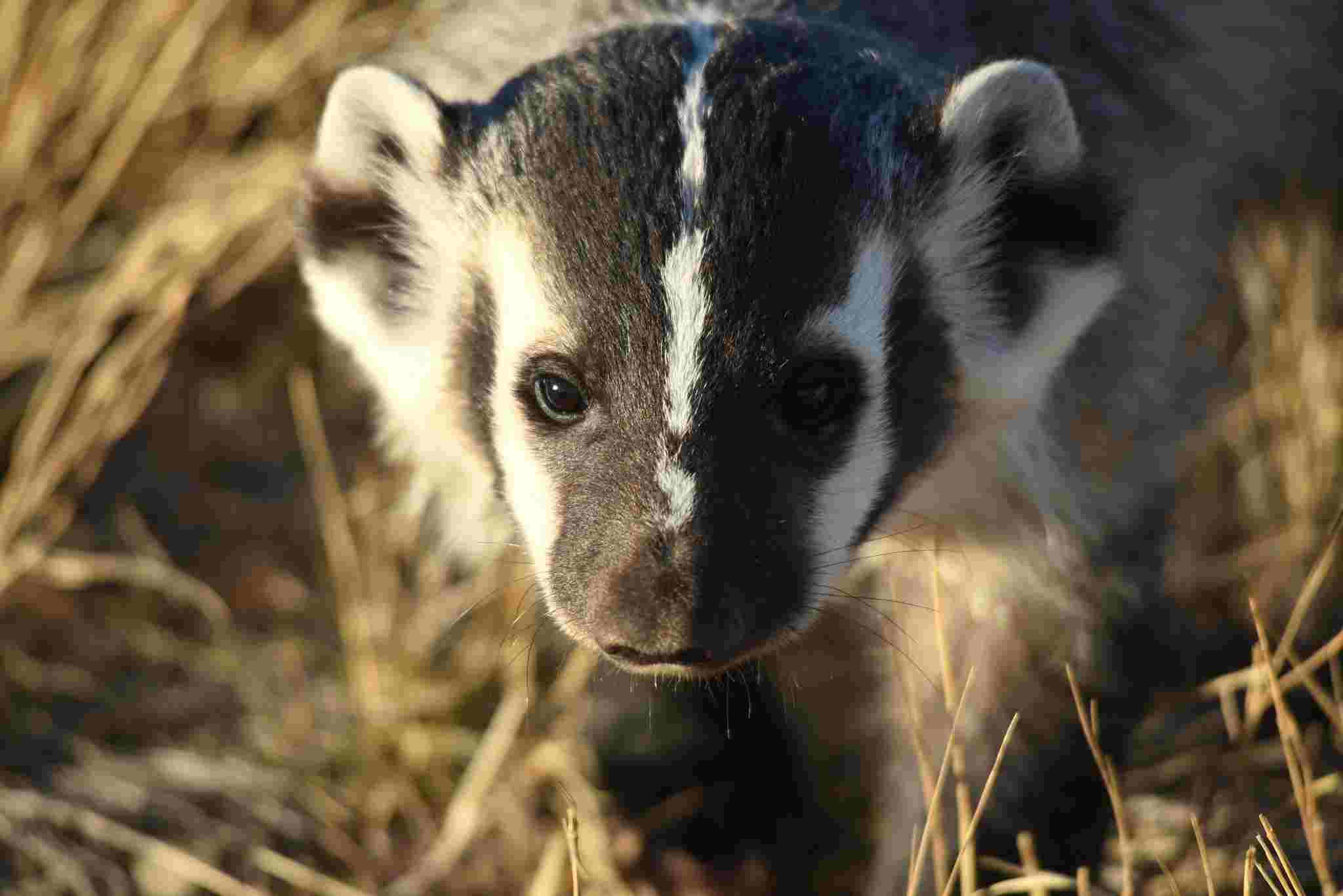
English Badger:
Compact build with a stocky body
Distinctive black and white facial markings
Grayish fur on the body
American Badger:
Flatter body with a distinctive grizzled appearance
White stripe on the face, extending to the back
Coarser fur than the English badger
Comparison: While both have stocky builds, their facial markings and fur textures differ, providing distinct visual cues for identification.
Ecological Implications: Differences in appearance may contribute to distinct roles in their respective ecosystems, potentially influencing predator-prey interactions.
3. Size:
English Badger:
Length: 60-90 cm (24-36 inches)
Tail: 12-20 cm (5-8 inches)
American Badger:
Length: 60-75 cm (24-30 inches)
Tail: 10-16 cm (4-6 inches)
Comparison: Similar in size, with subtle variations that may affect ecological roles and interactions within their habitats.
Ecological Implications: Comparable sizes suggest potential competition for resources, with adaptations to local prey availability.
4. Weight:
English Badger:
Typically 8-12 kg (18-26 pounds)
American Badger:
Typically 5-10 kg (11-22 pounds)
Comparison: English badgers tend to be heavier, potentially influencing foraging strategies and energy requirements.
Ecological Implications: Weight variations may reflect adaptations to local ecosystems and prey availability, affecting energy expenditure and hunting efficiency.
5. Bite Force:
English Badger:
Bite force not extensively studied
American Badger:
Estimated strong bite force for digging and subduing prey
Comparison: Limited data on English badger bite force; American badgers are known for powerful bites adapted for digging.
Ecological Implications: Strong bite forces in American badgers are crucial for excavating burrows and capturing prey, contributing to their ecological role as efficient burrowers.
6. Physical Offensive Advantages:
English Badger:
Sharp claws and powerful jaws for digging and capturing prey
May use aggression as a defense mechanism
American Badger:
Strong claws and robust jaws, adapted for digging
Aggressive when threatened, relying on powerful offensive capabilities
Comparison: Both possess formidable offensive adaptations, primarily for digging and subduing prey.
Ecological Implications: Offensive abilities contribute to their roles as efficient burrowers and predators within their ecosystems.
7. Physical Defensive Advantages:
English Badger:
Tough skin and fur provide some protection
May retreat into burrows for safety
American Badger:
Thick, loose skin offers protection against bites
Aggressive defensive behavior, including vocalizations and attacks
Comparison: Defensive strategies vary, with both species relying on physical adaptations and behaviors to deter threats.
Ecological Implications: Adaptations for defense contribute to their survival within ecosystems, impacting interactions with predators and competitors.
8. Speed:
English Badger:
Capable of running at moderate speeds
American Badger:
Relatively fast runners, especially in short bursts
Comparison: Both species exhibit reasonable speed, likely adapted to pursue prey or escape from predators.
Ecological Implications: Speed influences hunting success and evasion from predators, shaping their ecological roles.
9. Agility:
English Badger:
Agile in navigating burrows and dense vegetation
American Badger:
Highly agile, enabling effective movement in varied terrains
Comparison: Both species display agility, adapted to their specific habitats and hunting styles.
Ecological Implications: Agility is crucial for navigating diverse environments, influencing their ability to access resources and avoid threats.
10. Overall Physical Capacity:
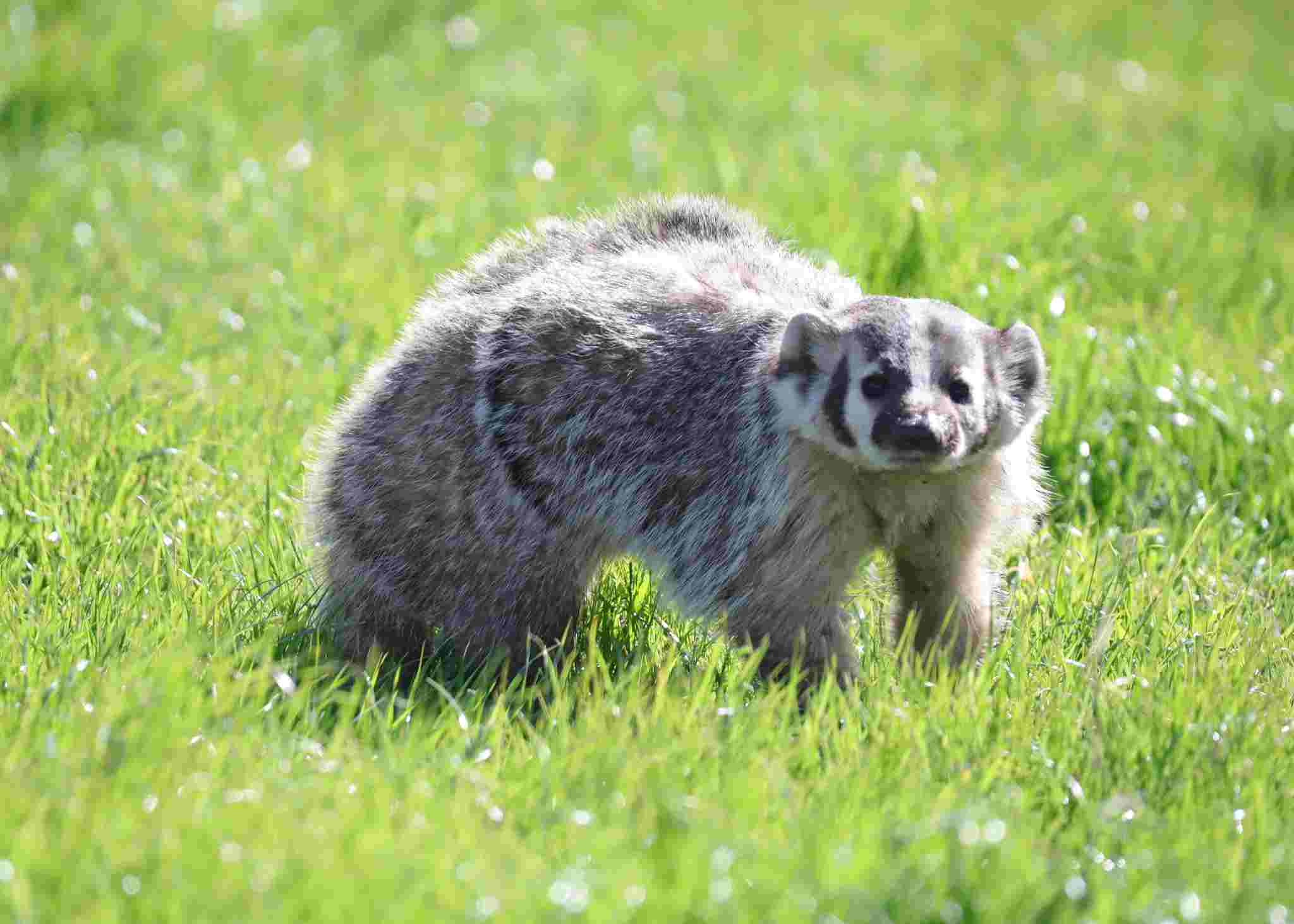
English Badger:
Robust build and well-adapted for digging
Moderate speed and agility contribute to overall physical capabilities
American Badger:
Flatter body enhances burrowing efficiency
Impressive speed and agility, especially during short bursts
Comparison: While both exhibit strong physical capacities, differences in body structure and adaptations may influence their overall effectiveness in different ecological niches.
Ecological Implications: Their overall physical capacity determines their effectiveness in hunting, foraging, and surviving within their specific habitats.
11. Habitat Preference(s):
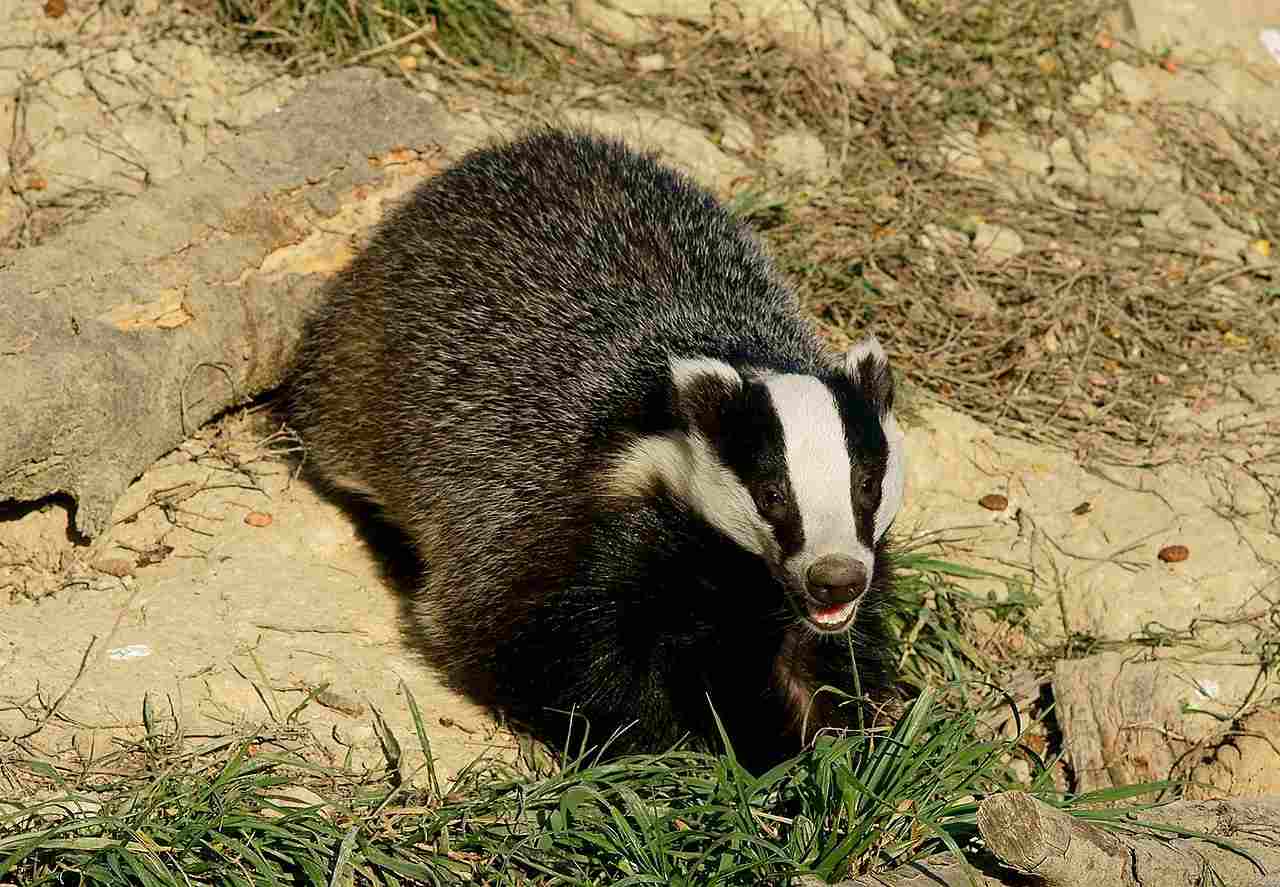
English Badger:
Prefers a mix of woodlands, grasslands, and meadows
Constructs elaborate burrow systems called setts
American Badger:
Thrives in open grasslands and prairies
Excavates burrows for shelter and hunting
Comparison: Differences in habitat preferences reflect adaptations to distinct ecosystems.
Ecological Implications: Habitat specialization influences their interactions with other species and the availability of prey.
12. Tracks:
English Badger:
Tracks show distinctive claw marks and pad imprints
Typically spaced out due to their moderate speed
American Badger:
Claw marks and pad imprints visible in tracks
Tracks often show a more spaced-out pattern due to their faster speed
Comparison: Both leave characteristic tracks, with differences reflecting their speed and movement patterns.
Ecological Implications: Tracking patterns may be utilized by researchers to study their movements and behaviors in the wild.
13. Lifespan:
English Badger:
Typically lives 4-5 years in the wild
American Badger:
Generally has a lifespan of 4-10 years in the wild
Comparison: Lifespans are similar, with some variability influenced by factors such as predation, disease, and environmental conditions.
Ecological Implications: Understanding lifespan contributes to conservation efforts and provides insights into population dynamics within their ecosystems.
14. Mode of Feeding:
English Badger:
Omnivorous diet, including earthworms, insects, small mammals, fruits, and plant matter
Relies on keen sense of smell to locate food
American Badger:
Carnivorous diet, primarily feeding on small mammals like rodents
Skilled digger, using powerful claws to uncover prey in burrows
Comparison: While both consume small mammals, the English badger has a broader omnivorous diet, including plant material.
Ecological Implications: Differences in feeding habits contribute to their roles in controlling prey populations and influencing vegetation dynamics.
15. Social Behavior:
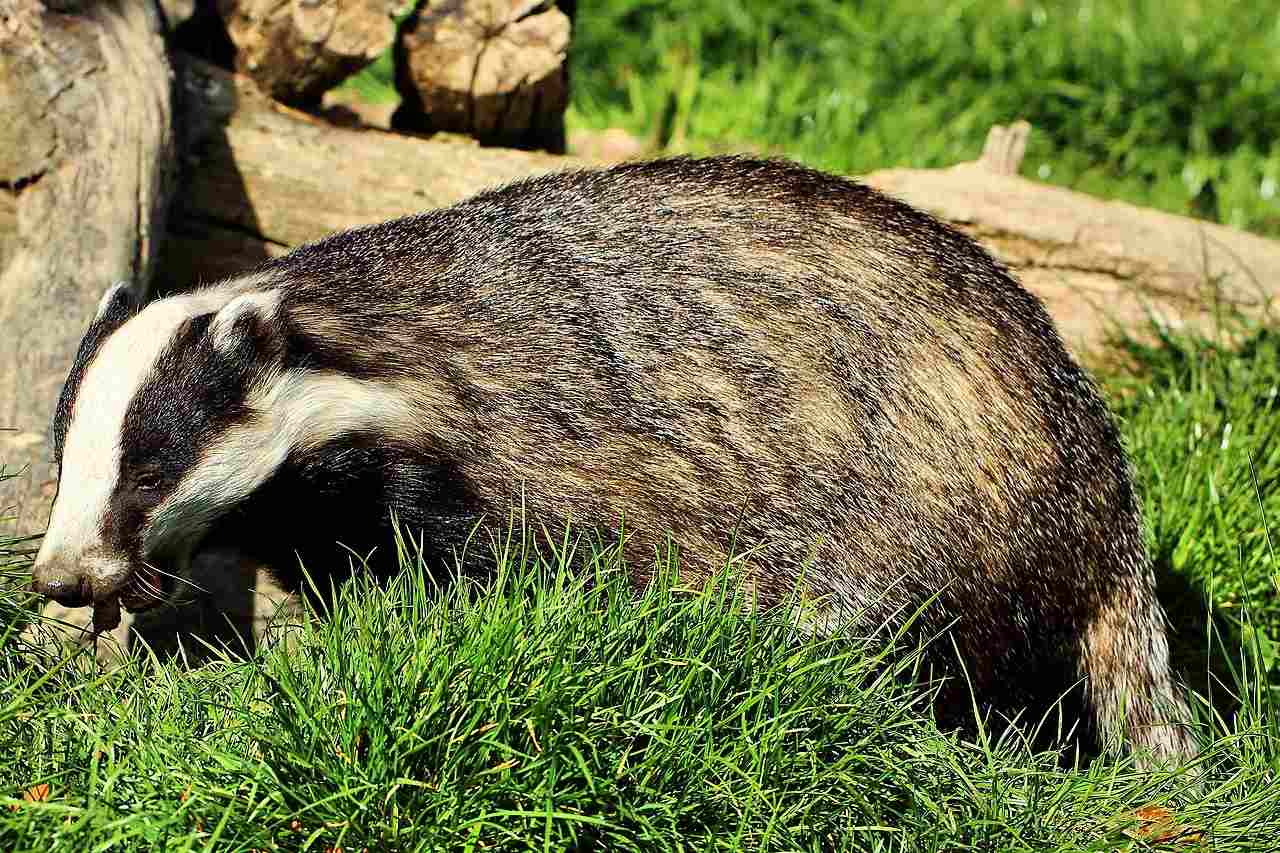
English Badger:
Generally solitary, with some social interactions in family groups
Hierarchical structure within groups
American Badger:
Often solitary, especially outside the breeding season
Aggressive territorial behavior
Comparison: Both exhibit solitary tendencies, but English badgers may show more social interactions within family groups.
Ecological Implications: Social behavior influences population dynamics and territoriality, impacting their interactions with other species.
16. Mode of Reproduction:
English Badger:
Breeding season typically occurs in late winter or early spring
Gestation period around 7 weeks, leading to the birth of cubs in spring
American Badger:
Breeding season typically in summer
Gestation period around 6 weeks, with cubs born in spring
Comparison: While both species have a relatively short gestation period, differences in breeding seasons may influence population dynamics.
Ecological Implications: Timing of reproduction can impact prey availability, influencing the dynamics of predator-prey relationships.
17. Parental Behavior:
English Badger:
Females (sows) play a primary role in raising cubs
Cubs remain in the sett for several weeks before venturing outside
American Badger:
Female raises cubs independently
Cubs start exploring outside the burrow at a young age
Comparison: While both mothers play a significant role, the English badger exhibits a more communal approach to raising cubs.
Ecological Implications: Parental behaviors influence cub survival rates and contribute to the overall population dynamics within their ecosystems.
18. Proximity to Human-Inhabited Areas:

English Badger:
May inhabit rural and suburban areas
Known to create setts in woodlands and fields
American Badger:
Found in various habitats, including grasslands and farmlands
May come into contact with humans in agricultural landscapes
Comparison: Both species can be found in proximity to human-inhabited areas, with potential implications for human-wildlife interactions.
Ecological Implications: Human presence can influence their behavior, habitat use, and potential exposure to anthropogenic threats.
19. Behavior Toward Humans:
English Badger:
Generally shy and elusive, avoiding direct contact with humans
May display defensive behavior if cornered or threatened
American Badger:
Typically avoids humans but can be aggressive if provoked
Known for defensive behaviors, including hissing and growling
Comparison: Both species tend to avoid direct interaction with humans, but American badgers may exhibit more overt defensive behaviors.
Ecological Implications: Human-wildlife conflicts can arise based on the behavior of these badgers, impacting conservation efforts.
20. Danger Posed to Humans:
English Badger:
Generally not considered dangerous to humans
Rare cases of defensive aggression if cornered
American Badger:
Can be aggressive and pose a threat if provoked
Infrequent encounters due to their elusive nature
Comparison: While both generally avoid humans, the American badger is more likely to display aggression if threatened.
Ecological Implications: Understanding potential dangers informs conservation strategies and helps mitigate human-wildlife conflicts.
21. Associated Precautions:
English Badger:
Encourage respectful observation from a distance
Avoid approaching setts to minimize disturbance
American Badger:
Caution recommended if encountered, especially in the wild
Maintain a safe distance and avoid provoking defensive behavior
Comparison: Similar precautions for both species, emphasizing the importance of minimizing disturbance.
Ecological Implications: Human behavior and awareness of precautions can impact the coexistence of badgers and human communities.
22. Conservation Status:

English Badger:
Generally classified as Least Concern
Populations face localized threats such as habitat loss, road mortality, and persecution
American Badger:
Conservation status varies by region
Some populations are of Least Concern, while others face threats due to habitat loss and fragmentation
Comparison: Both species face localized threats, but their conservation status can vary based on regional factors.
Ecological Implications: Conservation efforts should consider the specific challenges each population faces to ensure the long-term survival and health of both English and American badger populations.
Summary of Comparison:
Taxonomy:
Both belong to the Mustelidae family and Carnivora order.
Appearance:
English badgers have a compact build with black and white facial markings, while American badgers have a flatter body with a grizzled appearance.
Size:
Similar in size, with subtle variations.
Weight:
English badgers are generally heavier than American badgers.
Bite Force:
Limited data on English badger bite force; American badgers are known for powerful bites.
Physical Offensive Advantages:
Both have sharp claws and powerful jaws for digging and capturing prey.
Physical Defensive Advantages:
Differences in defensive strategies, both relying on physical adaptations.
Speed:
Comparable moderate speeds.
Agility:
Both display agility adapted to their specific habitats.
Overall Physical Capacity:
Differences in body structure and adaptations.
Habitat Preference(s):
English badgers prefer woodlands, grasslands, and meadows; American badgers thrive in open grasslands.
Tracks:
Differences in track patterns reflecting speed and movement.
Lifespan:
Similar lifespans with some variability.
Mode of Feeding:
English badgers have an omnivorous diet; American badgers primarily carnivorous.
Social Behavior:
Both exhibit solitary tendencies, with English badgers showing more social interactions in family groups.
Mode of Reproduction:
Differences in breeding seasons, with similar gestation periods.
Parental Behavior:
Both exhibit significant maternal care, with differences in communal behavior.
Proximity to Human-Inhabited Areas:
Both can be found in proximity to human-inhabited areas.
Behavior Toward Humans:
Both tend to avoid direct interaction, with American badgers more likely to exhibit defensive behaviors.
Danger Posed to Humans:
Generally not considered dangerous, with American badgers more likely to display aggression if provoked.
Associated Precautions:
Similar precautions for respectful observation and minimizing disturbance.
Conservation Status:
Both face localized threats, with varying conservation statuses.
Conclusion:
I. Similarities:
Both species share characteristics such as taxonomic classification, physical adaptations, and general ecological roles.
II. Differences:
Distinct differences exist in aspects like appearance, weight, feeding habits, social behavior, and breeding seasons, highlighting their adaptation to different ecosystems and ecological niches.
